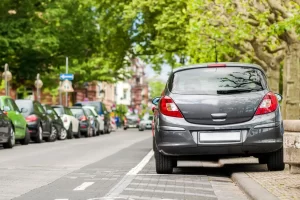Australia has just been handed a map for getting to net zero. Here’s how it will guide us

Australia’s push for net-zero emissions received a welcome boost on Thursday, with the release of an official report showing how Australia can seek to cut domestic emissions across each sector of the economy.
The Climate Change Authority prepared the report, which provides vital scaffolding for Australia’s climate ambitions. Hopefully, it will inform the Australian government’s upcoming decarbonisation plans for each sector of the economy, and its updated goal for emissions reduction out to 2035.
The pathways laid out by the authority show how emissions cuts can be made in sectors such as land use, resources, transport and energy. Importantly, the report shows what effective climate action looks like – and what Australia can achieve.
The roadmap also shows how Australia can do its part to limit global warming to 1.5°C to avoid temperatures climbing dangerously higher. Climate scientists are clear: every fraction of a degree matters.
Why are these pathways important?
The authority groups Australia’s domestic emissions into six categories: electricity and energy, transport, industry and waste, agriculture and land, built environment, and resources.
For each sector of Australia’s economy, getting emissions to net zero poses different challenges and opportunities.
Preventing emissions from buildings requires, among other things, getting off gas and making them more efficient. Reducing emissions from transport means encouraging uptake of diverse solutions such as electric vehicles, trains and cycling.
The report provides pathways that can guide the decarbonisation of each sector. It shows which technologies could be taken up and phased out, how to attract, enable and time investments, and how to align policy with practical implementation.
The authority borrows from the approach of the Intergovernmental Panel on Climate Change, by showing a range of possible routes to net zero and comparing their work to others.
We hope the Australian government continues this approach, to ensure decision-makers understand how different modelling approaches and scenarios combine to create a robust body of knowledge.
The land sector has become a carbon sink in recent years.
AzureJasper/Shutterstock
Pathways show us the way
We have spent more than a decade doing work similar to the report just released. Our own sectoral pathways are also designed to support governments, businesses and investors as they look for opportunities to reduce emissions.
Decision-makers around the world are calling for such guidance.
Why? Because pathways create a signal of how things can change. Laying out the problem, and different approaches to solving it, helps create a common understanding of the opportunities, risks and barriers to effective action.
They make it possible for governments to set clear goals and ensure policies match what is needed and are backed by evidence. Rather than just setting out the overarching intention of, say, cutting emissions in half in a decade, pathways show how it can be done.
Pathways let investors and companies identify and reduce risks and get ahead in a global economy aiming for net-zero emissions.
And they lay out the technologies and processes needed to make the shift: ranging from mature, ready-to-deploy technologies such as renewable energy and storage, to maturing technologies such as green steelmaking.

Mining of critical minerals will increase as fossil fuel extraction decreases under the resources sector plan. Pictured: Greenbushes lithium mine in Western Australia.
David Steele/Shutterstock
Pathways to keep 1.5°C alive
Early next year, the Australian government is expected to release its new 2035 emissions target, taking us beyond the current target for 2030.
Every signatory to the 2015 Paris Agreement has to publicly set a new target every five years. Other nations are doing the same.
In the authority’s plan, Australia would hit net zero by 2040 under the more ambitious pathway aimed at meeting the 1.5°C goal, or 2050 under the 2°C scenario. These net zero dates are broadly consistent with our own analysis.
But there are opportunities to move faster still.
Boosted ambitions
Transport is now Australia’s fastest-growing source of emissions. The authority’s transport pathway envisages passenger vehicles going electric and encouraging public transport and active transport, such as walking, cycling and micromobility such as e-scooters.
It aligns with our research, which shows a diverse solutions approach is a better option to reduce transport emissions. This is especially important given recent delays in the shift to zero-emissions vehicles.
However, the authority only takes a diverse approach to passenger transport. Our own work shows Australia can diversify its approach to freight transport.
The authority focuses on moving trucks from diesel and petrol to battery electric and green hydrogen. But Climateworks’ analysis shows we can also reduce distance travelled through route optimisation and shift freight to rail, where possible.
For the built environment – our houses, offices and infrastructure – the report rightly notes most technologies are now technically ready, commercially available, cheaper to run and healthier. They include energy-efficient electrical appliances, roof and wall insulation and window glazing.
But there’s an opportunity to go further.
The most cost-effective way to green your house depends on which state or territory you live in. Quick fixes – such as switching gas hot water for heat pumps – are included in the authority’s report.
But as our recent modelling shows, homes in cooler climates benefit from more comprehensive improvements including double-glazing windows and adding insulation to walls and ceilings, alongside the quick fixes.

Heat pump? Solar? Insulation? The most cost-effective way of cutting emissions from houses differs state by state.
ThomsonD/Shutterstock
What’s next?
The pathways laid out by the Climate Change Authority in this report will not just be left on the shelf. They have very real use for business leaders and investors, as well as for policymakers.
These pathways will guide Australia’s comprehensive national net-zero plan. They give us a starting point and show us how it can be done.
Read more:
Can we really reach net zero by 2050? A new report maps out Australia’s path in more detail than ever before


